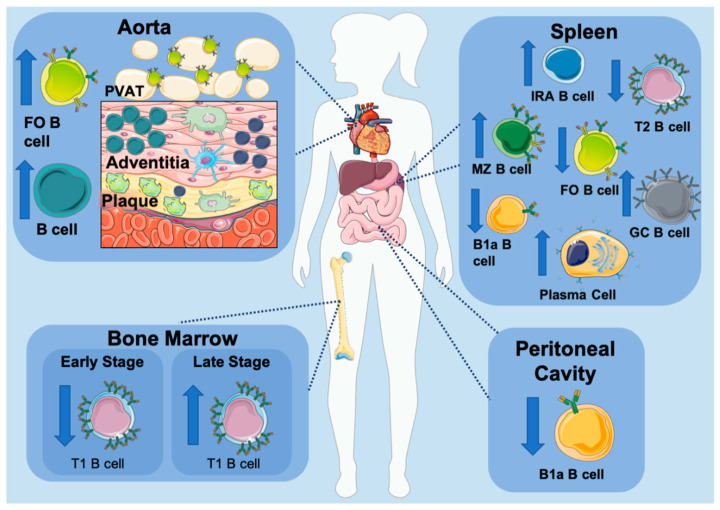Figure 2.
B cell subset development in atherosclerosis. Several animal studies have demonstrated that an atherosclerotic environment modulates B cell subset composition, evident by the altered distribution of B cells throughout the body. Artery tertiary lymphoid tissue (ATLO) located directly adjacent to plaques and the perivascular adipose tissue (PVAT) that surrounds the aorta contain an elevated number of B cells. The number of transitional B cells (T1) in bone marrow correlates with the progression of atherosclerosis with a decrease in early stage and increase in late stage. B1a B cells residing in the peritoneal cavity are decreased, while IRA B cells are significantly elevated in atherosclerosis. The spleen is the main reservoir of B cells and a center of humoral responses. Despite the decrease in transitional B cells (T2), MZ B cells are significantly increased in atherosclerosis. FO B cells are shown to either decrease or have no significant change despite the significant increase in germinal center (GC) B cells and plasma cells.

